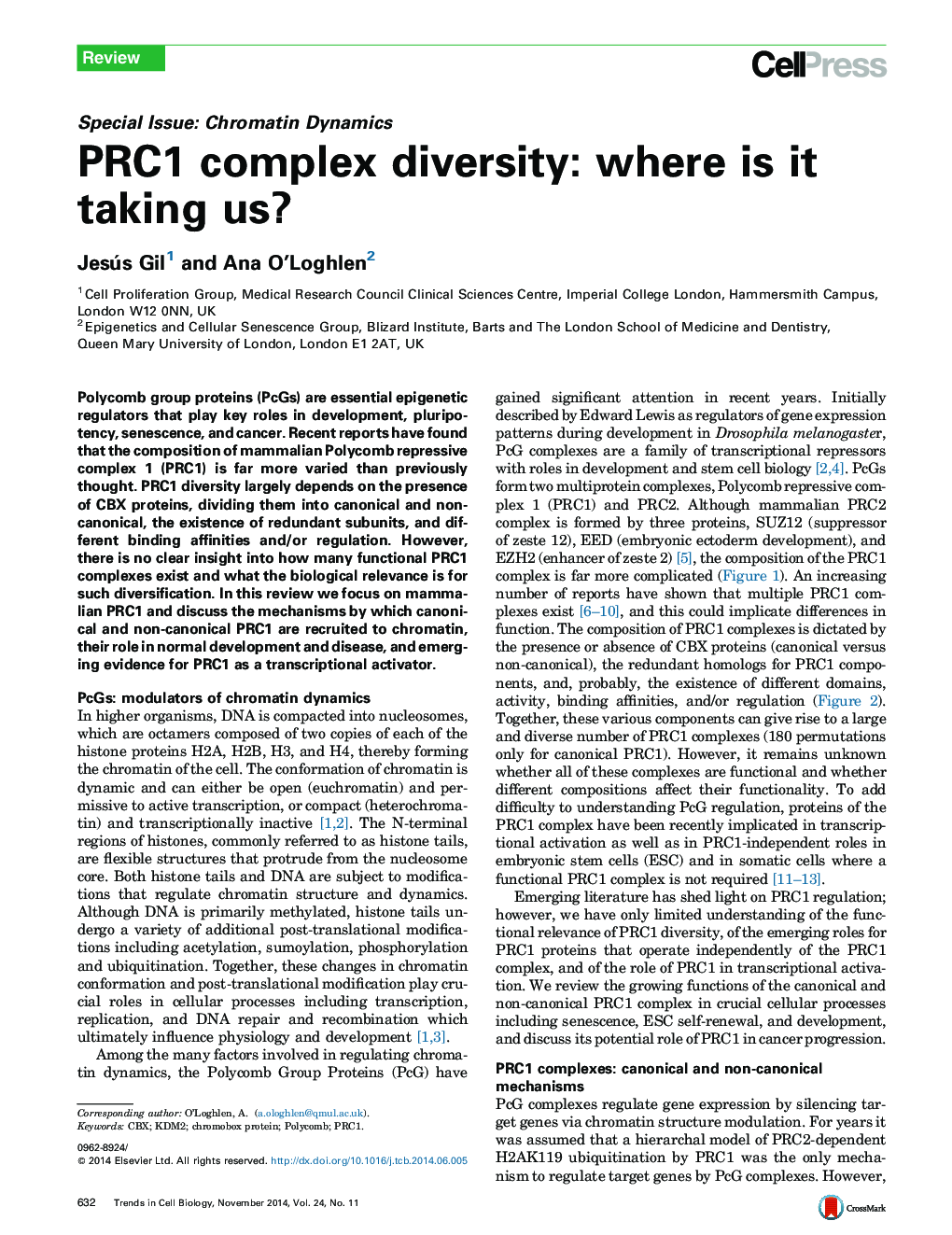| Article ID | Journal | Published Year | Pages | File Type |
|---|---|---|---|---|
| 2204384 | Trends in Cell Biology | 2014 | 10 Pages |
•PRC1 diversity can influence functionality.•PRC1 can function as both transcriptional repressors and activators.•PcG-independent roles are emerging for PRC1 proteins.•PRC1 complexes are involved in development, self-renewal, senescence, and cancer.
Polycomb group proteins (PcGs) are essential epigenetic regulators that play key roles in development, pluripotency, senescence, and cancer. Recent reports have found that the composition of mammalian Polycomb repressive complex 1 (PRC1) is far more varied than previously thought. PRC1 diversity largely depends on the presence of CBX proteins, dividing them into canonical and non-canonical, the existence of redundant subunits, and different binding affinities and/or regulation. However, there is no clear insight into how many functional PRC1 complexes exist and what the biological relevance is for such diversification. In this review we focus on mammalian PRC1 and discuss the mechanisms by which canonical and non-canonical PRC1 are recruited to chromatin, their role in normal development and disease, and emerging evidence for PRC1 as a transcriptional activator.
